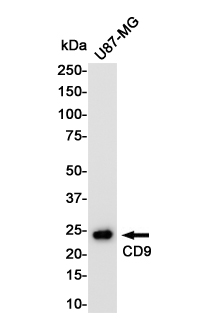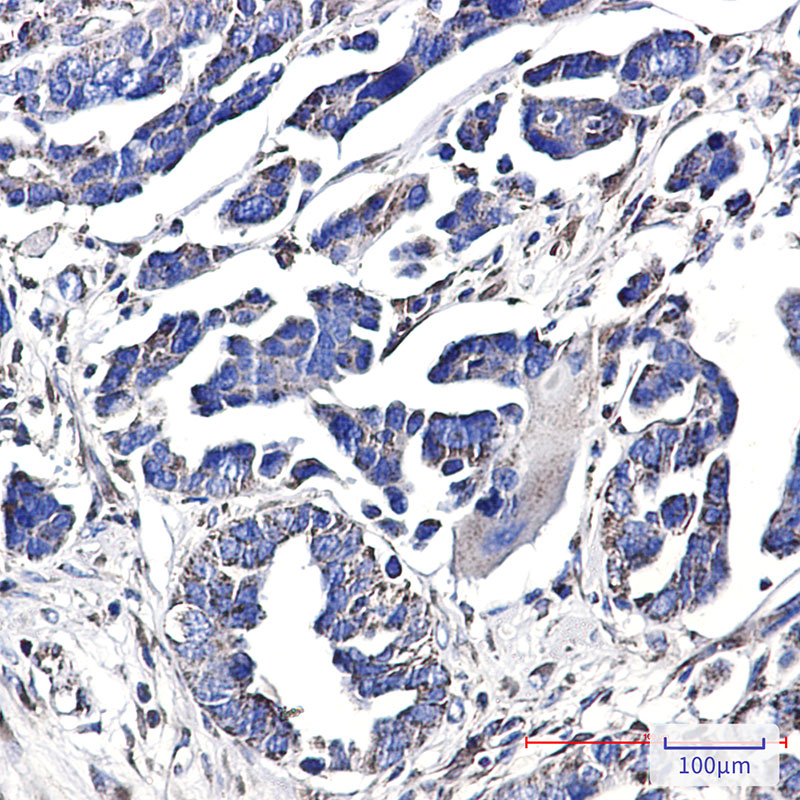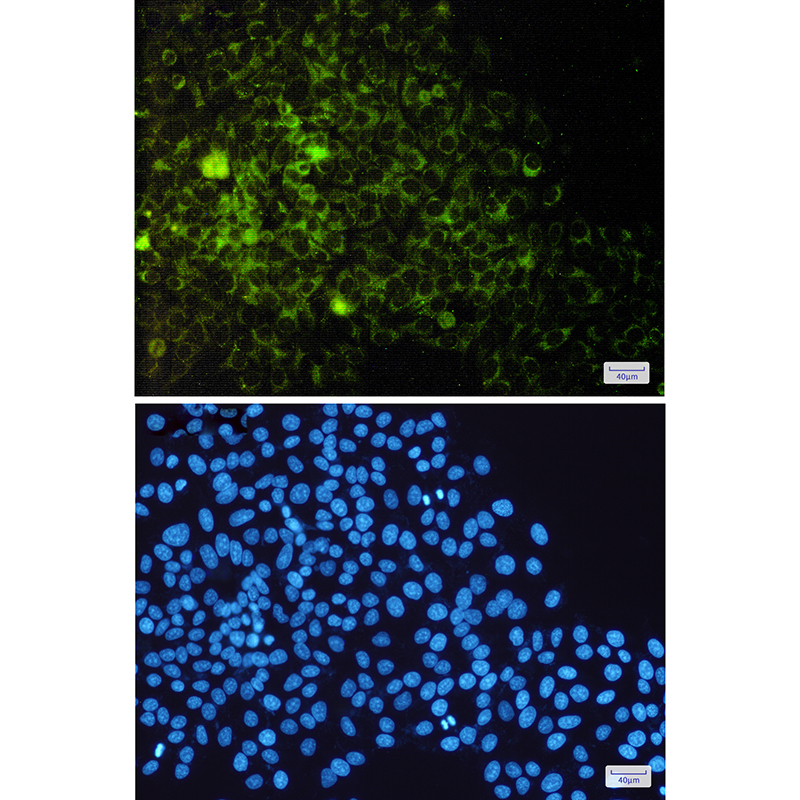


| WB | 1/500-1/1000 | Human,Mouse,Rat |
| IF | 1/20 | Human,Mouse,Rat |
| IHC | 1/50-1/100 | Human,Mouse,Rat |
| ICC | 1/50-1/200 | Human,Mouse,Rat |
| FCM | 1/50-1/100 | Human,Mouse,Rat |
| Elisa | 咨询技术 | Human,Mouse,Rat |
| Aliases | CD9; MIC3; TSPAN29; GIG2; CD9 antigen; 5H9 antigen; Cell growth-inhibiting gene 2 protein; Leukocyte antigen MIC3; Motility-related protein; MRP-1; Tetraspanin-29; Tspan-29; p24; CD antigen CD9 |
| Entrez GeneID | 928 |
| WB Predicted band size | Calculated MW: 25 kDa; Observed MW: 25 kDa |
| Host/Isotype | Rabbit IgG |
| Antibody Type | Primary antibody |
| Storage | Store at 4°C short term. Aliquot and store at -20°C long term. Avoid freeze/thaw cycles. |
| Species Reactivity | Human |
| Immunogen | A synthetic peptide of human CD9 |
| Formulation | Purified antibody in TBS with 0.05% sodium azide,0.05%BSA and 50% glycerol. |
+ +
以下是关于CD9抗体的3篇代表性文献及其摘要概括:
---
1. **文献名称**: *CD9 regulates keratinocyte migration via α3 integrin-linked signaling pathways*
**作者**: Takeda Y, et al.
**摘要**: 本研究利用CD9抗体阻断实验,揭示了CD9蛋白通过调控α3整合素相关信号通路,影响角质形成细胞的迁移能力,提示CD9在皮肤伤口愈合中的潜在作用。
---
2. **文献名称**: *CD9 is required for the molecular assembly of the oocyte membrane microdomain essential for sperm-egg fusion*
**作者**: Kaji K, et al.
**摘要**: 通过CD9抗体干预实验,发现CD9蛋白是小鼠卵母细胞膜微结构域形成的关键因子,其缺失导致精子-卵子融合障碍,为生殖生物学研究提供了重要依据。
---
3. **文献名称**: *Comparative analysis of extracellular vesicle isolation methods using CD9-based antibody approaches*
**作者**: Théry C, et al.
**摘要**: 该研究比较了基于CD9抗体的免疫沉淀、流式检测等方法在细胞外囊泡分离中的效率,为外泌体研究中的抗体选择提供了标准化建议。
---
**备注**:以上文献信息为示例性质,具体引用时建议通过PubMed或Google Scholar核对原文。如需补充文献类型(如综述/实验研究),可进一步调整。
CD9 antibody targets the CD9 protein, a member of the tetraspanin superfamily, which is widely expressed in various cell types, including immune cells, endothelial cells, and epithelial cells. CD9 is a transmembrane protein involved in cell adhesion, migration, and signal transduction by forming dynamic membrane complexes ("tetraspanin webs") with integrins, growth factor receptors, and other tetraspanins. It plays roles in physiological processes such as platelet activation, sperm-egg fusion, and immune regulation, as well as pathological conditions like cancer metastasis and viral infection (e.g., HIV).
CD9 antibodies are essential tools for studying its expression, localization, and interactions. They are widely used in flow cytometry, Western blotting, and immunohistochemistry to investigate CD9's role in cancer progression (as both a tumor suppressor and promoter, depending on context), stem cell differentiation, and extracellular vesicle (e.g., exosome) biology. CD9 is a common exosome marker, making its antibody critical for extracellular vesicle research. Therapeutic applications are emerging, including targeting CD9 in anticancer strategies or leveraging its involvement in exosome-mediated intercellular communication. However, functional diversity and context-dependent roles of CD9 necessitate careful interpretation in research and clinical translation.
×